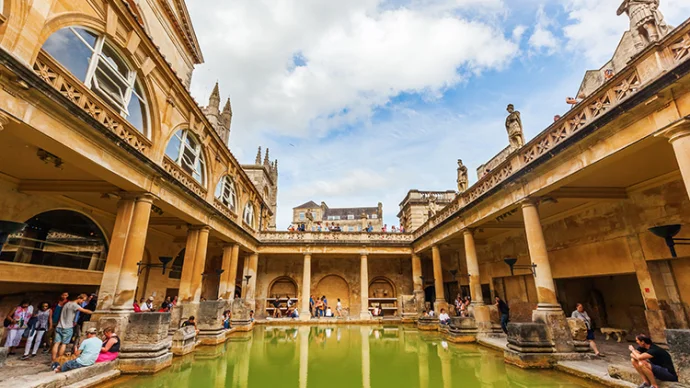
About Welwyn Roman Baths
The Welwyn Roman Baths complex houses the remains of a Roman bathhouse dating back to the 3rd century AD.
History of Welwyn Roman Baths
The village of Welwyn was once the site of a Romano-British settlement, where a Roman road crossed the river Mimram. Originally part of a larger Roman villa (the Dicket Mead villa), the bath house remains are a scheduled ancient monument, with the layout of the cold, warm and hot rooms and the heating system remarkably well preserved.
Whilst the villa was never fully excavated, it’s thought the complex was probably part of a farm, with speculation that it might have been at least in part the equivalent of a hotel, due to its proximity to nearby Roman roads. (There was also another Roman villa near Welwyn on the Lockleys estate).
The ruins were uncovered in 1960 by local archaeologist Tony Rook, and the baths were gradually uncovered by excavation over the following decade.
Shortly after this, the Ministry of Transport announced the route of a new motorway, straight over the top of the excavation. Efforts to preserve Welwyn Roman Baths resulted in the construction of an underground steel chamber and an access tunnel for the public. Once this was completed, the A1 (M) motorway was built over the top of it.
Thus the Welwyn Roman Baths are housed in a unique environment – in an underground steel chamber built 9 metres below the motorway, just north of modern-day Welwyn Garden City.
Only about half of the original extent of the baths are now on display. Visible parts remaining include the hypocaust, the tepidarium (warm room), caldarium (hot room) and the frigidarium (cold room) floor and cold bath, constructed from opus signinum (a building material used in ancient Rome consisting of tiles broken up into very small pieces, mixed with mortar).
Welwyn Roman Baths today
Today visitors to Welwyn Roman Baths can view the remains of the small bath complex, discover information on the Roman’s elegant culture and approach to bathing and view an exhibition detailing the history of the site and other relevant archaeological finds from the local area.
The Welwyn Hatfield Museum Service oversees the baths, along with archaeological material at the Mill Green Museum.
Getting to Welwyn Roman Baths
It’s easiest to travel to the baths by car. Leave the A1(M) at Junction 6, head for the A1000 towards Welwyn and follow signs from there. There are no significant buildings to be seen as the museum is underground, but there is parking available on site.
If travelling by train, the Roman Baths are situated 1.3 miles from Welwyn North Station.
Featured In

Hertfordshire Historic Sites
Trace Hertfordshire's history at these sites and attractions.

Roman Baths in Europe
Immerse yourself in the history of the Roman Empire at these remarkable ancient ruins of bathhouses and hypocausts across Europe.




















